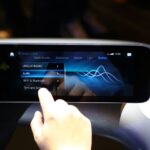A research team led by the New York University (NYU) Tandon School of Engineering has developed a method that enables self-driving cars to indirectly share knowledge of road conditions, allowing each vehicle to learn from the experience of other vehicles even if they rarely meet on the road. This research solves a long-standing problem in the field of artificial intelligence: how to achieve knowledge sharing between vehicles while protecting data privacy.
What is Cached-DFL
Typically, vehicles only share learning results during brief direct encounters, which limits their ability to quickly adapt to new environments. Yong Liu, a professor of electrical and computer engineering at the NYU Tandon School of Engineering, explained: “This research creates a network of shared experiences for self-driving cars. A vehicle that only drives in Manhattan, USA, can now learn about traffic conditions in Brooklyn from other vehicles, even if the car has never driven in Manhattan. This will make the car smarter and better able to respond to unexperienced situations.”
The researchers named this new method Cached Decentralized Federated Learning (Cached-DFL). Unlike traditional federated learning that relies on a central server to coordinate updates, Cached-DFL allows vehicles to train their own AI models locally and share these models directly with other vehicles.
When vehicles are within 100 meters of each other, they use high-speed device-to-device communication technology to exchange trained models rather than raw data. Crucially, vehicles can also pass on models they received from previous encounters, allowing information to spread widely beyond direct encounters. Each vehicle can cache up to 10 external models and update the AI system every 120 seconds. To prevent outdated information from degrading performance, the system automatically eliminates old models based on time thresholds to ensure that vehicles prioritize the latest relevant data.

Advantages of Cached-DFL
The research team verified the system through computer simulations using the Manhattan street layout as a template. In the experiment, virtual vehicles moved along the city’s grid at a speed of about 14 meters per second and turned at intersections based on probability – the probability of going straight was 50% and the probability of turning to other available roads was the same.
Unlike traditional decentralized learning approaches, which suffer when vehicles do not often encounter each other, Cached-DFL allows models to propagate indirectly in the network, similar to how information propagates in delay-tolerant networks, which handle intermittent connections by storing and forwarding data until a connection is available. By acting as relays, vehicles can spread knowledge even if they have never personally experienced certain situations.
“This is similar to how information propagates in social networks, where vehicle devices can now pass on knowledge about other devices they have encountered, even if those devices have never directly met,” Yong Liu explained. This multi-hop transmission mechanism breaks through the limitations of traditional model sharing methods that rely on instant one-to-one exchanges. By allowing vehicles to act as relays, Cached-DFL is able to more effectively spread learning information throughout the fleet, rather than being limited to direct interactions between each vehicle individually.
The technology enables connected vehicles to learn information about road conditions, signals, and obstacles while protecting data privacy. This is particularly important in urban environments, where different vehicles face changing conditions but rarely have enough time for traditional learning.
Application of Cached-DFL
The study shows that vehicle speed, cache capacity, and model timeliness all affect learning efficiency. Faster vehicle speeds and more frequent communications improve learning, while outdated models reduce accuracy. Adopting a swarm-based caching strategy (preferentially retaining diverse models from different regions rather than just the latest model) can further optimize learning results.
As AI moves from centralized servers to edge devices, Cached-DFL provides a safe and efficient way for self-driving cars to learn collectively, making them smarter and more adaptable. Cached-DFL can also be applied to other networked intelligent mobile systems, such as drones, robots, and satellites, to promote robust and efficient decentralized learning in the process of achieving swarm intelligence.











